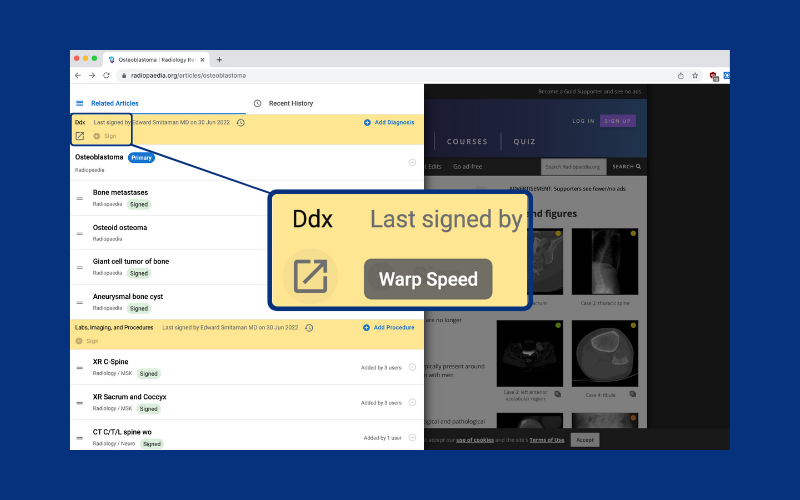Welcome to Warp Speed™ for Differential Diagnosis
The Warp Speed™ button for Orbit Discovery now lets users issue a one-click command to open new tabs with reference pages for every disease in the differential diagnosis of the primary disease topic they are viewing.
Now available on Orbit Discovery for desktop Chrome and Edge

In case you aren't familiar with Orbit Discovery, this browser extension and iOS app gives you the ability to instantly view the diseases and imaging tests that most closely relate to the topic you're currently viewing. Developed by the veteran team of physicians, designers, and engineers who founded Orbit CME, this newer offering uses natural language processing (NLP) to speed access to expert radiological knowledge at point-of-care. Built for students, trainees, and faculty across every specialty, the technology is currently in limited release with ~1,000 users in programs in the United States.
The latest enhancement to this technology, Warp Speed™ for Differential Diagnosis, grew out of the Human Disease Project, an ongoing academic collaboration between 50+ residents, fellows, and faculty in academic radiology. Through this collaboration, residents and faculty have been working together using custom crowdsourcing and authorship tools to compose a high-trust set of 3400 imaging differential diagnoses, backed by detailed authorship information and faculty signatures.
Designers at Orbit understood that Discovery's browser extension could make unique use of the high-trust differential diagnosis generated through the Human Disease Project. They developed the Warp Speed™ button as a one-click command to open new tabs with reference pages for every disease in the differential diagnosis of the primary disease topic they are viewing.
As a new class of trainees receives their Orbit Discovery accounts through Core Physics Review and other programs, they will be first in line to explore the speed and utility of Warp Speed™, structured Ddx collaboration, detailed author annotations, and other novel techniques being deployed by the engineers at Orbit CME in the coming months.
—Orbit Staff
Interested in bringing Orbit Discovery to your program? Email support@orbitcme.com for more information.

